Work without Augmenta hardware by simulating people moving in space.
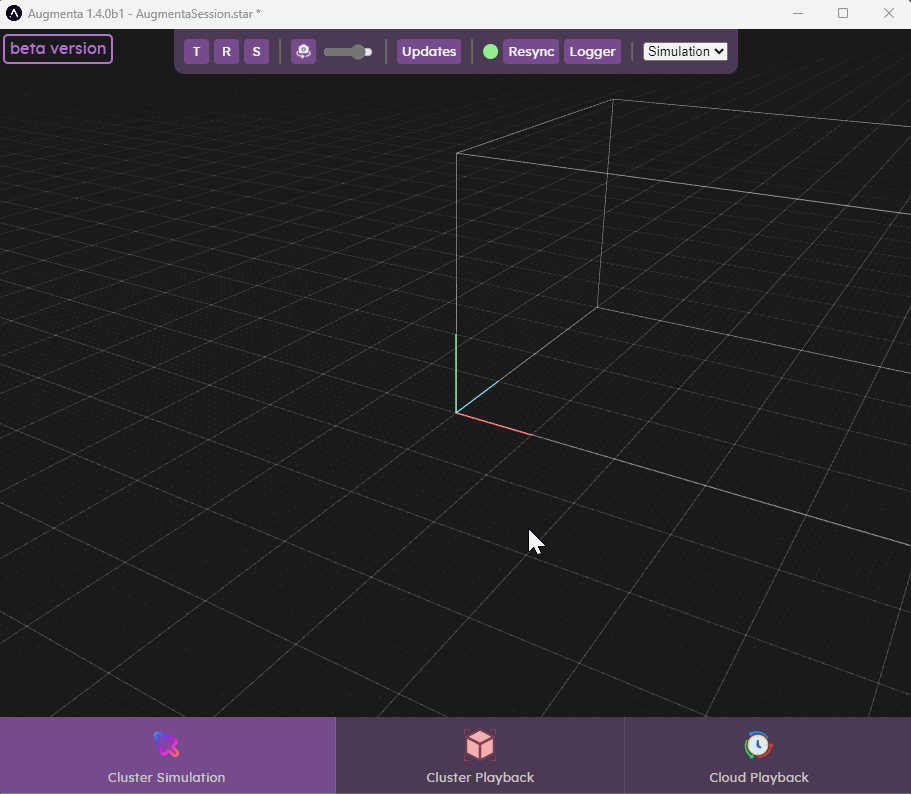
Download
Note for advanced user
Features
Each of the main features of the simulator is contained in the menus at the bottom of the window.
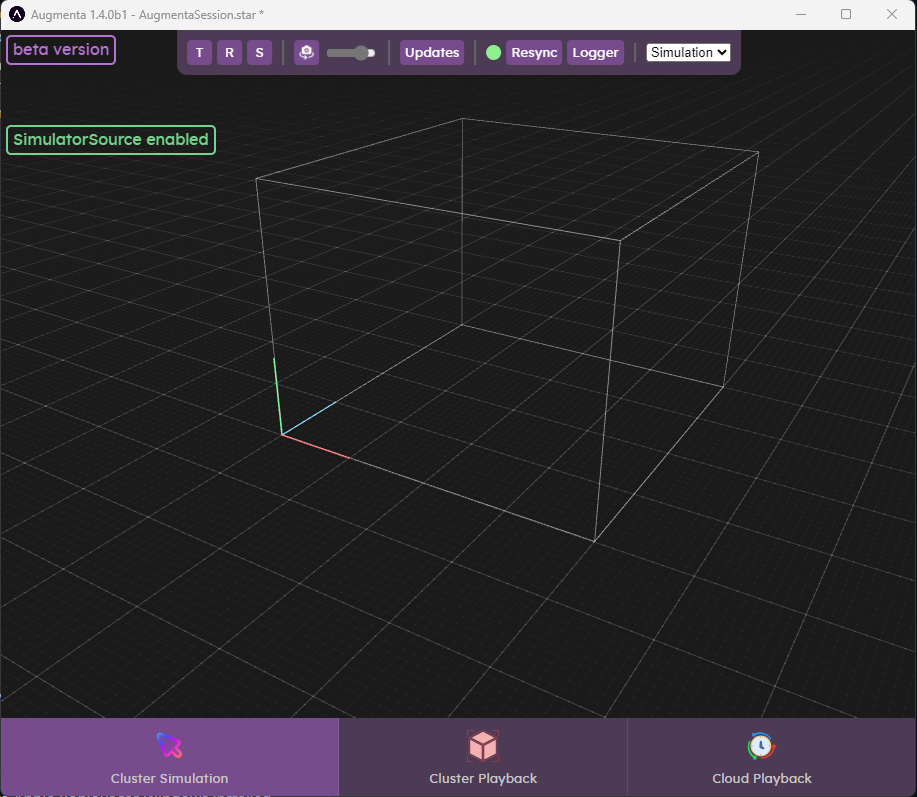
Cluster Simulation
Simulation parameters
The cluster simulation allows you to generate artificial clusters with various behaviours.
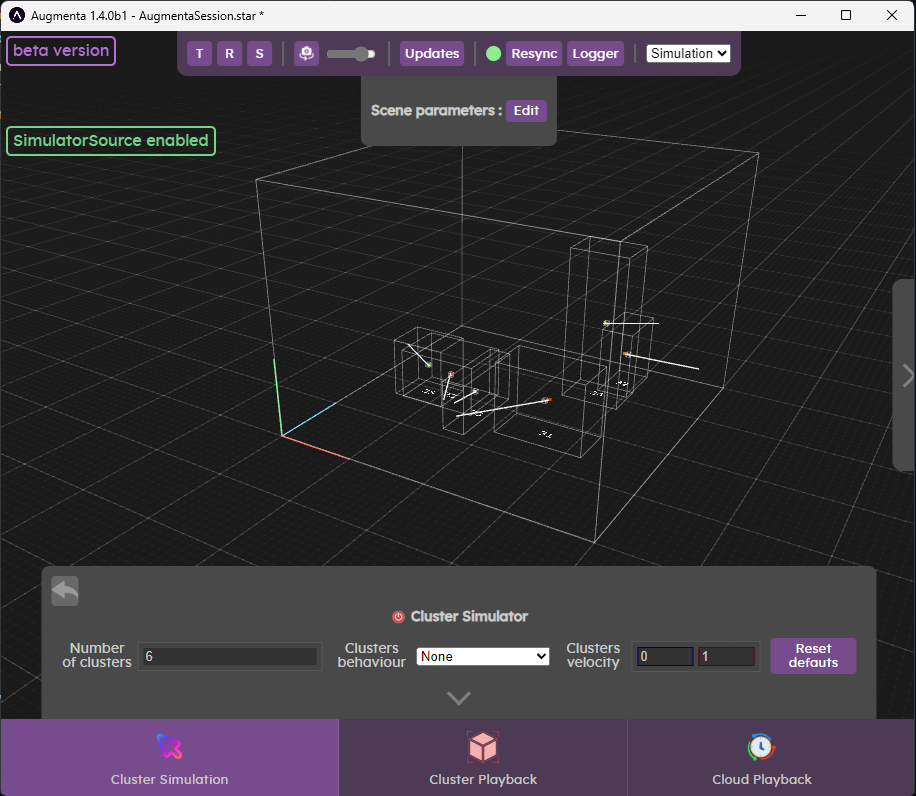
Enable the cluster simulation by clicking on the button next to the Cluster Simulator name.
The main Cluster Simulation parameters are:
Number of clusters: The number of clusters that will be generated.
Cluster behaviour: Change the type of movement that the clusters will have.
Cluster velocity: Change the range of speed inside of which the cluster velocities are picked
There are more advanced parameters available by clicking on the arrow at the bottom of the Cluster Simulation menu.
You can for example control the size of the clusters, change more behaviour parameters or add some detection issues to see how your content reacts to them.
Slot ID
The Slot ID submenu in the “Cluster Simulation” tab allows you to enable or disable the ID reassignment using the Slot ID algorithm.
This should be enabled when you need to keep the IDs of the clusters in a defined range (for example 1-10). For some types of output it is mandatory to have this enabled (for Resolume for example), otherwise the integration might not work.
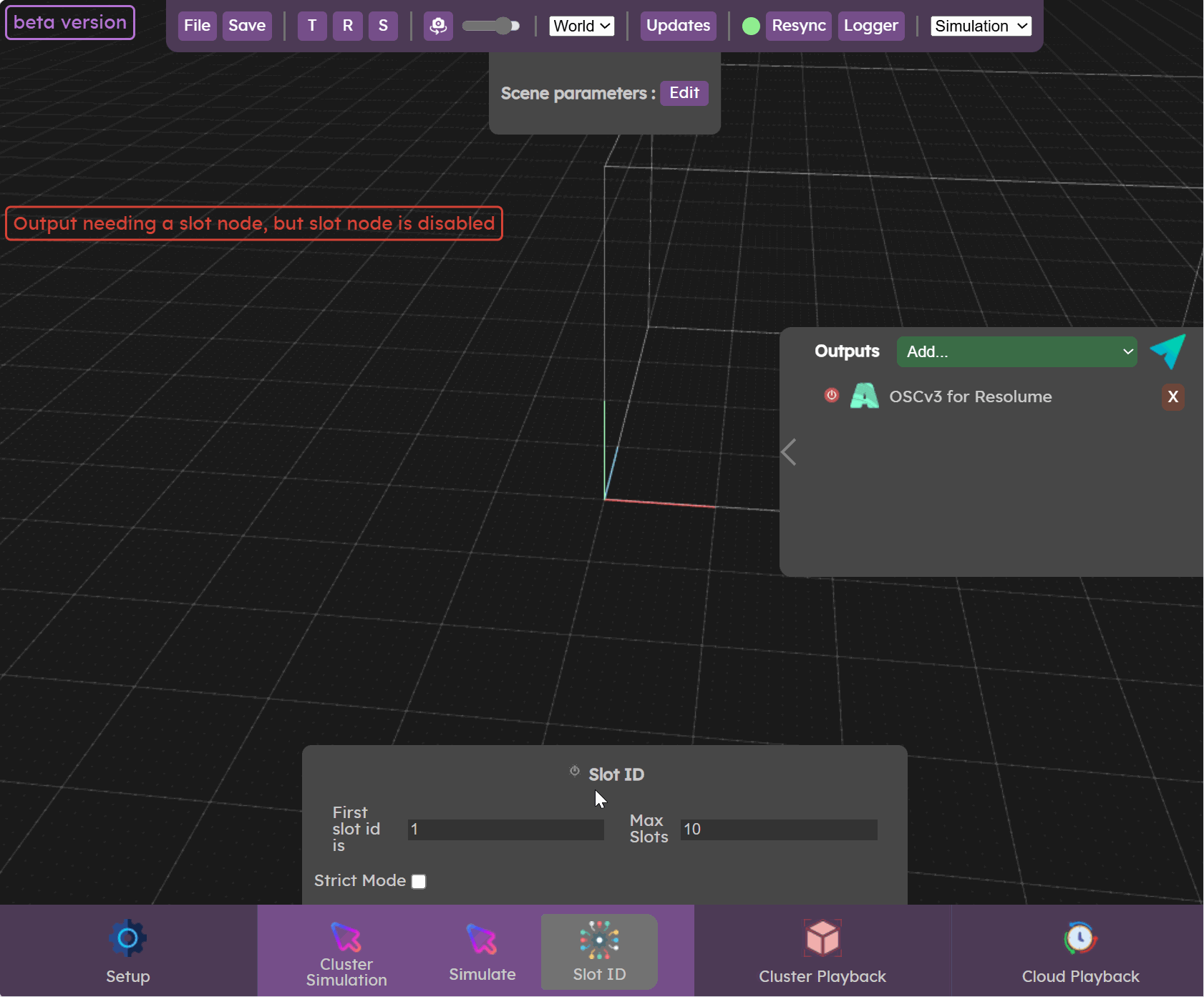
Cluster simulation walkthrough video
Check this quick video tutorial on how to use the simulator for cluster simulation
Cluster Playback
The cluster playback allows you to read a cluster recording.
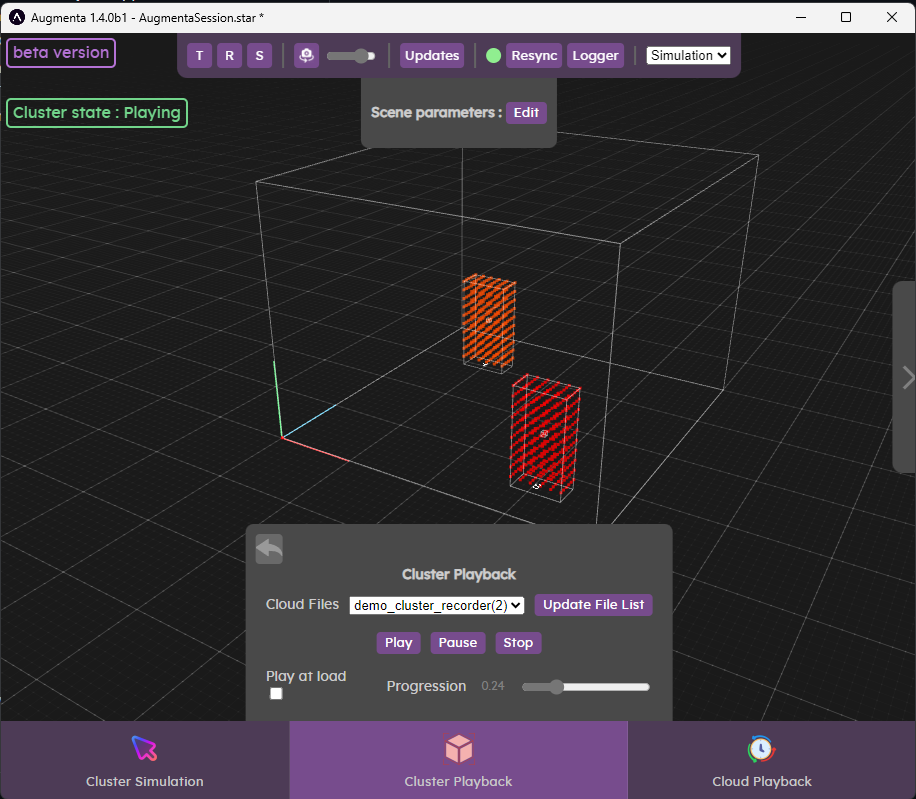
A cluster recording is recorded at the end of the processing pipeline, you cannot change any tracking parameter on this type of recording.
To be able to read a record, you have to copy the recorded file to:
<your documents folder>/Augmenta/records.
Then, come back to the simulator, click on the “Update File List” button and select the file you want to read.
You can then play / pause / stop the playback of the selected file.
Check this quick video tutorial on how to use the simulator for cluster simulation
You can download clusters and clouds recording here to play with this feature.
Cloud Playback
The cloud playback allows you to read a cloud recording.
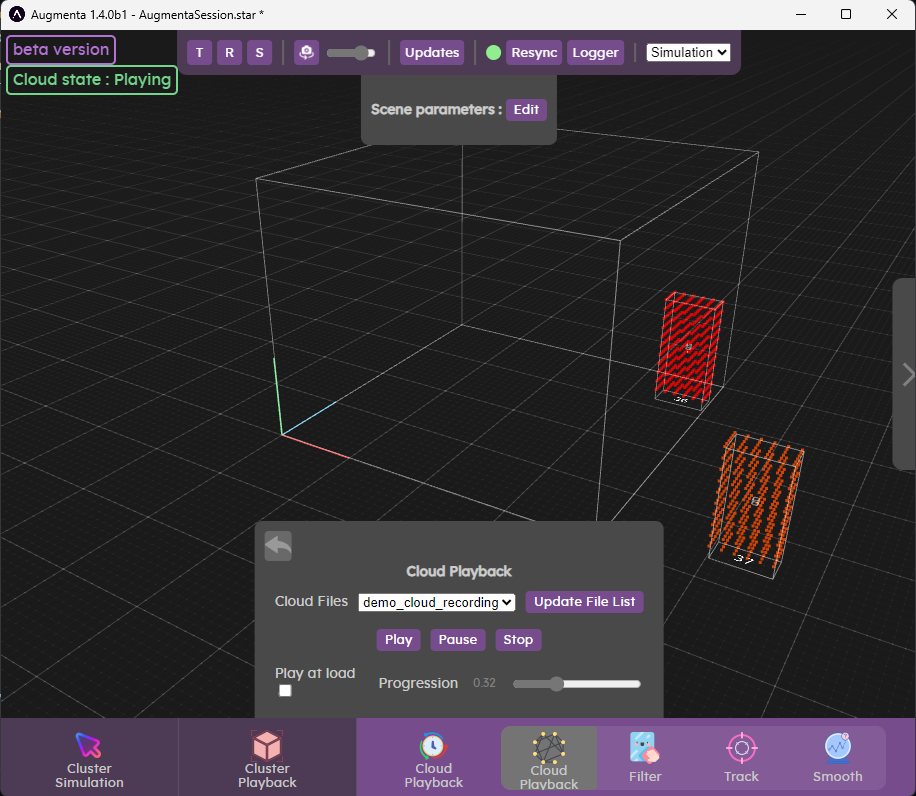
This type of recording only allows you to play a non-cluster pointcloud. This will only work with a Websocket output, it is the only one capable of streaming pointclouds.
It is a good type of recording if you do not want to use the positions / bounding box of individual people but rather create graphics effects using the raw pointcloud.
To be able to read a record, you have to copy the recorded file to:
<your documents folder>/Augmenta/records.
Then, come back to the simulator, click on the “Update File List” button and select the file you want to read.
You can then play / pause / stop the playback of the selected file.
Check this quick video tutorial on how to use the simulator for cluster simulation
You can download clusters and clouds recording here to play with this feature.
Scene settings
You can change the scene settings to match your project’s needs. Click on the “Scene parameters”’s edit button to change the position / rotation and size of the scene in the bottom panel.
Once you are done, you can click on the arrow at the top of the scene parameter container to go back to the previous menu.
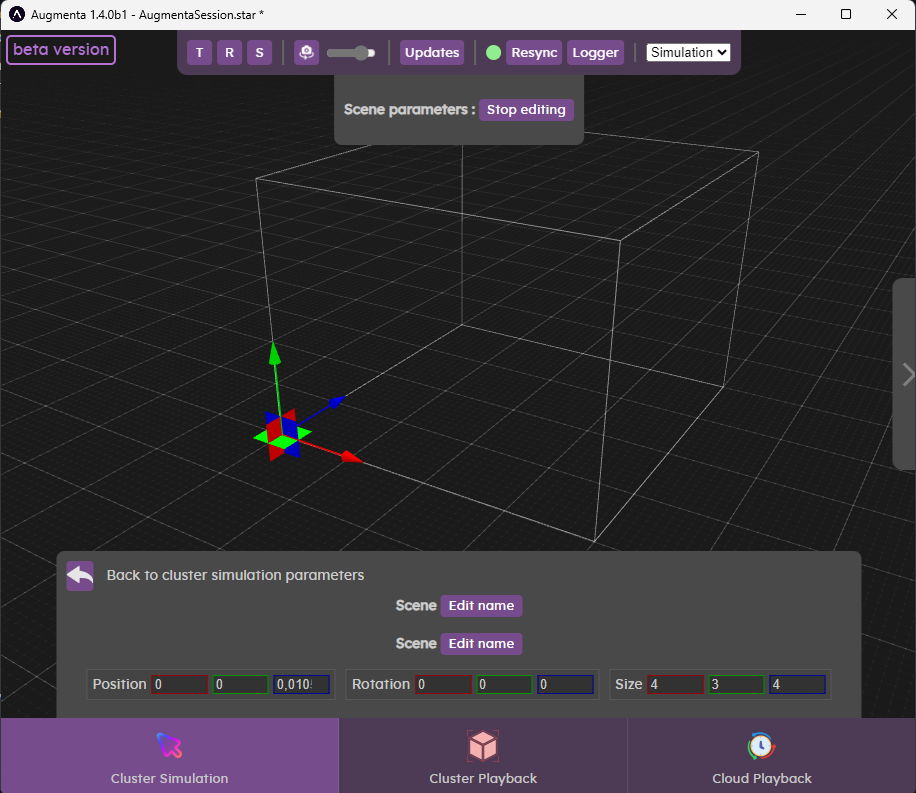
Output
Having clusters in the Simulator UI is great, but receiving data in your creative software of choice is better. To start streaming data, open the panel on the right to edit the data Outputs.
Click on the add dropdown and select the type of output you want to use. There are various options to choose from, including presets for popular creative softwares.
Once you added an output, you can select it in the Outputs panel to display its settings in the bottom panel. All outputs will have an IP address and port settings to choose where to send the data. There will also usually be some output specific options.
You can also have access to advanced parameters by clicking on the arrow at the bottom.
Click on the “back” arrow at the top of the output settings panel to go back to the previous menu parameters.
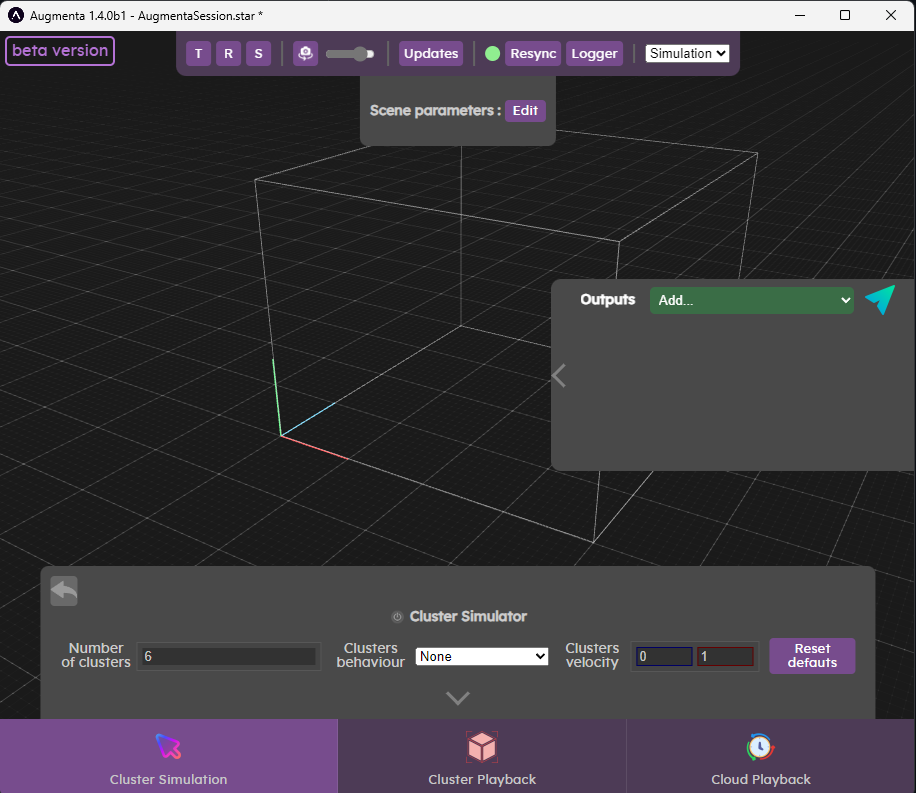
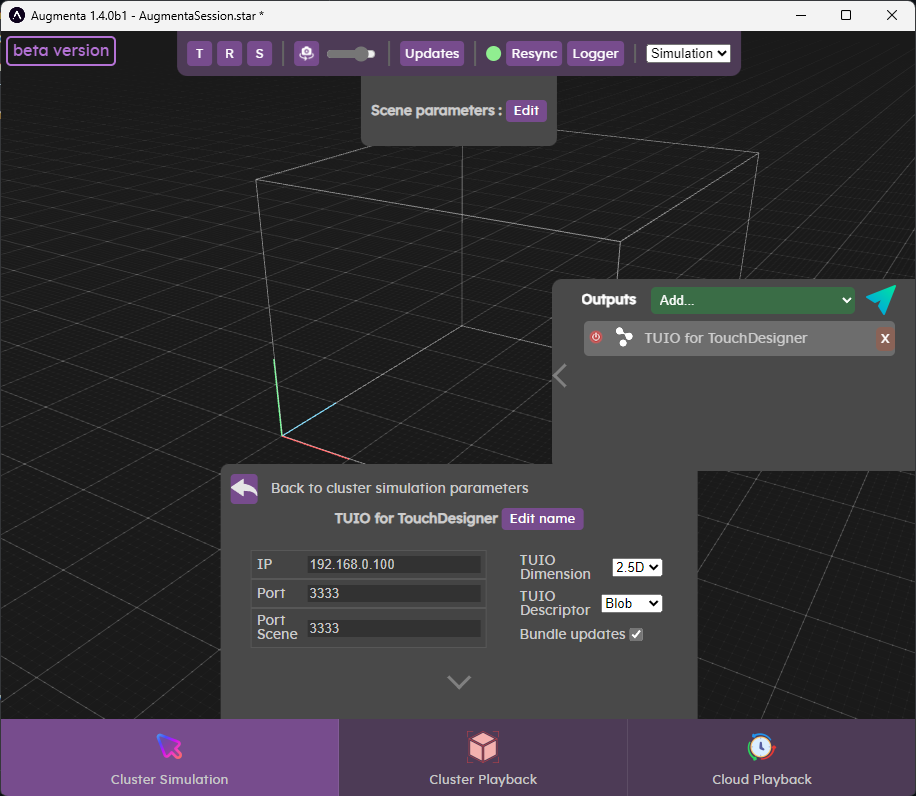
Controls
Camera control
Mouse
Left click: Orbit camera
Right click: Translate camera
Mouse wheel: zoom camera
Touch screen
1 finger drag : Orbit camera
2 finger drag : Translate camera
Pinch : zoom camera
Limitations
Centroid vs Bounding Box center
Noisy data
